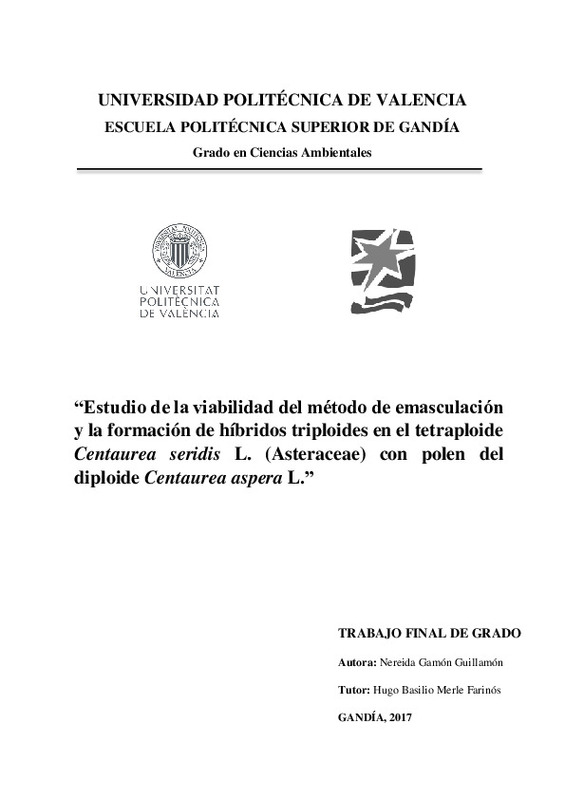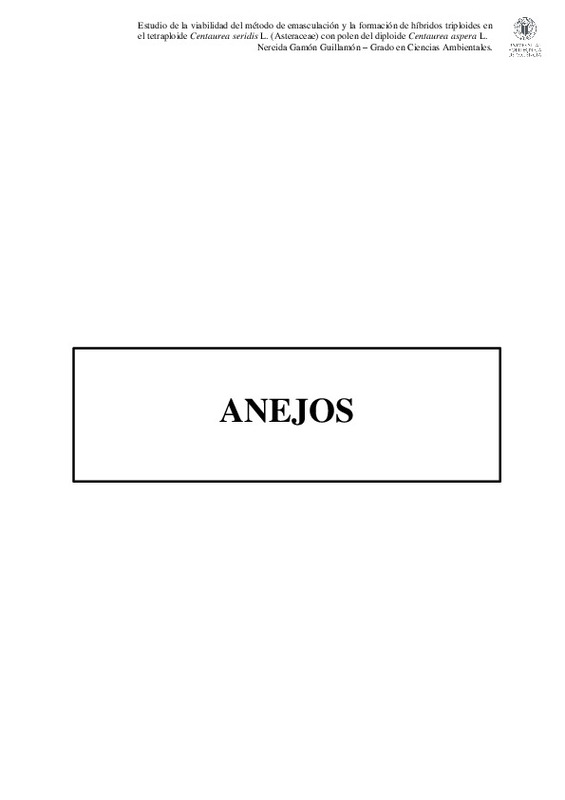JavaScript is disabled for your browser. Some features of this site may not work without it.
Buscar en RiuNet
Listar
Mi cuenta
Estadísticas
Ayuda RiuNet
Admin. UPV
Estudio de la viabilidad del método de emasculación y la formación de híbridos triploides en el tetraploide Centaurea seridis L. (Asteraceae) con polen del diploide Centaurea aspera L
Mostrar el registro completo del ítem
Gamón Guillamón, N. (2017). Estudio de la viabilidad del método de emasculación y la formación de híbridos triploides en el tetraploide Centaurea seridis L. (Asteraceae) con polen del diploide Centaurea aspera L. Universitat Politècnica de València. http://hdl.handle.net/10251/89039
Por favor, use este identificador para citar o enlazar este ítem: http://hdl.handle.net/10251/89039
Ficheros en el ítem
Metadatos del ítem
| Título: | Estudio de la viabilidad del método de emasculación y la formación de híbridos triploides en el tetraploide Centaurea seridis L. (Asteraceae) con polen del diploide Centaurea aspera L | |||
| Autor: | Gamón Guillamón, Nereida | |||
| Director(es): | ||||
| Fecha acto/lectura: |
|
|||
| Resumen: |
Many naturally occurring plant species have evolved through mechanisms of duplication of their genetic content (polyploidization). These processes play an important role in adaptive and speciation evolution. The genus ...[+]
Muchas especies vegetales de forma natural han evolucionado gracias a mecanismos de duplicación de su contenido genético (poliploidización). Estos procesos juegan un papel importante en la evolución adaptativa y de ...[+]
|
|||
| Palabras clave: |
|
|||
| Derechos de uso: | Reserva de todos los derechos | |||
| Editorial: |
|
|||
| Titulación: |
|
|||
| Tipo: |
|
recommendations
Este ítem aparece en la(s) siguiente(s) colección(ones)
-
EPSG - Trabajos académicos [5004]
Escuela Politécnica Superior de Gandia








